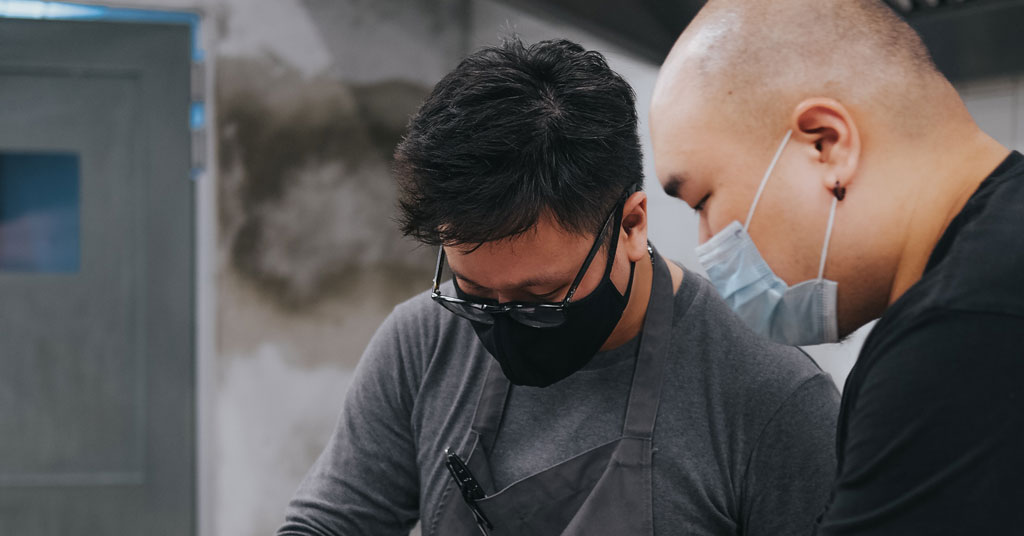5 Tips To Adapt Your Retail Operations in a Pandemic

As we enter 2021, it’s safe to say that things will not be getting back to the previous normal any time soon. As consumers and businesses adapt to the next normal, plenty of unknowns remain. Covid-19 cases are spiking across the country with more shutdowns looming and a federal stimulus package still in political limbo as I write. And it remains to be seen what impact the Biden administration will have on the national economy, or when the promised coronavirus vaccines will become available on a mass scale.
But there is good news. According to Visa’s “Back to Business Study,” more than four in five (86%) Americans planned to shop this holiday season, and the majority (60%) indicated they would do half or more of their winter holiday shopping at local retailers. Further, non-retail franchises have continued to see bounce backs, with pizza stores thriving during the shutdowns, while online ordering for in-store pickup has helped sustain businesses that otherwise would have been unable to continue operating under these circumstances.
While we’ve come a long way since March, franchisees must continue taking the necessary steps to optimize operations in the face of quickly changing conditions. With this in mind, here are five actions franchisee leaders can adopt to meet demand, remain nimble, and adjust to the realities of this upcoming year.
1) Keep your customers in the know
For franchisees with brick-and-mortar locations, it’s imperative that potential customers know your operating hours and open locations. It might seem simple, but keeping your website updated and factually accurate is more important than ever for customer satisfaction, safety, and convenience. Additionally, all locations should clearly inform customers of their safety and hygiene protocols by posting these details both online and onsite.
2) Reconfigure your layout
To help customers practice good social distancing while they shop (6 feet), you may need to adjust your interior space. Designating one-way aisles and spreading out display racks can create space between shoppers. Savvy managers can also explore how to use unoccupied space in the store, as well as strategically place popular items to eliminate unneeded crowding. Consider putting those items close to the entrance so people can quickly get what they need and make room for others. Finally, if the weather permits, open doors or windows to bring fresh air into the store.
3) Adopt contactless and mobile pay technology
A key way to minimize bottlenecks and overcrowding is by equipping sales staff with mobile checkout devices to ring up buyers on the sales floor, rather than having them line up at a main cash register area. If possible, ensure that all of your checkout stations can process contactless transactions from mobile phones (Apple Pay, Google Pay). As an added bonus, these offerings are closely aligned with what consumers want in terms of a buying experience. In essence, you’re giving them increased convenience alongside safety.
4) Focus on flexible solutions
To compensate for not being able to operate at full occupancy, consider extending your hours of operation—giving customers a broader time frame for shopping. If you have the resources, drive-thru ordering and pickup are additional options that promote social distancing, while also increasing the availability of your services beyond the number of customers allowed in your physical stores. Additionally, some businesses across the U.S. are experimenting with QR code window shopping to sell to customers outside of their storefronts. If limited inside space is problematic (and you operate in a warmer state), consider taking your business outside.
5) Hire to meet demand
One of the biggest challenges in the upcoming months is that we don’t know what consumer demand will look like. This makes it significantly harder to staff compared with years past—especially when you consider the possibility that additional restrictions could arrive (or be lifted) at any time, affecting the number of personnel and customers allowed in locations. To deal with this uncertainty, franchise managers must adopt protocols and policies that allow them to staff on demand, whether by implementing a technology-powered staffing solution or having personnel on standby during anticipated times of heavy traffic.
Blake Pinard is General Manager of Shifts at Snagajob. For more information, visit snagajob.com.
Share this Feature
Recommended Reading:
FRANCHISE TOPICS
- Multi-Unit Franchising
- Get Started in Franchising
- Franchise Growth
- Franchise Operations
- Open New Units
- Franchise Leadership
- Franchise Marketing
- Technology
- Franchise Law
- Franchise Awards
- Franchise Rankings
- Franchise Trends
- Franchise Development
- Featured Franchise Stories
FEATURED IN

Multi-Unit Franchisee Magazine: Issue 1, 2021

$200,000
$150,000





 The multi-unit franchise opportunities listed above are not related to or endorsed by Multi-Unit Franchisee or Franchise Update Media Group. We are not engaged in, supporting, or endorsing any specific franchise, business opportunity, company or individual. No statement in this site is to be construed as a recommendation. We encourage prospective franchise buyers to perform extensive due diligence when considering a franchise opportunity.
The multi-unit franchise opportunities listed above are not related to or endorsed by Multi-Unit Franchisee or Franchise Update Media Group. We are not engaged in, supporting, or endorsing any specific franchise, business opportunity, company or individual. No statement in this site is to be construed as a recommendation. We encourage prospective franchise buyers to perform extensive due diligence when considering a franchise opportunity.